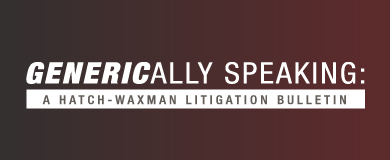- Acumen Powered by Robins Kaplan LLP®
- Affirmative Recovery
- American Indian Law and Policy
- Antitrust and Trade Regulation
- Appellate Advocacy and Guidance
- Business Litigation
- Civil Rights and Police Misconduct
- Class Action Litigation
- Commercial/Project Finance and Real Estate
- Corporate Governance and Special Situations
- Corporate Restructuring and Bankruptcy
- Domestic and International Arbitration
- Health Care Litigation
- Insurance and Catastrophic Loss
- Intellectual Property and Technology Litigation
- Mass Tort Attorneys
- Medical Malpractice Attorneys
- Personal Injury Attorneys
- Telecommunications Litigation and Arbitration
- Wealth Planning, Administration, and Disputes
Acumen Powered by Robins Kaplan LLP®
Ediscovery, Applied Science and Economics, and Litigation Support Solutions
-
June 1, 2022Chambers USA Recognizes Five Robins Kaplan Practice Groups And 17 Lawyers In 2022 Guide
-
June 1, 2022Seasoned Attorney Joins Firm’s Business Litigation Group
-
May 26, 2022Shira Shapiro Named Woman of Promise By The Pearl Society
-
June 3, 202219th Annual Advanced Insurance Law
-
June 9, 2022Building Your Brand: Perspectives and Insights from a Diverse Bar
-
June 10, 2022LGBTQ Legal Services: Transgender Name Change Clinic
-
May 24, 2022Briefly: Seeking Fees and Costs While on Appeal
-
May 19, 202211th Circ. Ban On Service Awards May Inhibit Class Actions
-
May 13, 2022Trademark Applications and the Murky Waters of Subject Matter Jurisdiction
-
June 2, 2022Sandberg Stepping Down as Meta COO After 14 Years
-
June 1, 2022Markets Revert to Recent Form as Pessimism Takes Hold
-
May 27, 2022Unexpectedly Strong Retail Sales Pull Markets Back from the Brink
Find additional firm contact information for press inquiries.
Find resources to help navigate legal and business complexities.
Horizon Pharma, Inc. v. Dr. Reddy’s Labs., Inc.
Given two critical differences between the invention and the prior art, the claims of the patents-in-suit were not obvious; they were adequately described, and were infringed.
October 20, 2017

Case Name: Horizon Pharma, Inc. v. Dr. Reddy’s Labs., Inc., 11-2317 (MLC) (DEA), 2017 U.S. Dist. LEXIS 107707 (D.N.J. July 12, 2017) (Cooper, J.)
Drug Product and Patent(s)-in-Suit: Vimovo® (naproxen / esomeprazole magnesium); U.S. Patents Nos. 6,926,907 (“the ’907 patent”) and 8,557,285 (“the ’285 patent”)
Nature of the Case and Issue(s) Presented: The patents-in-suit claimed dosage forms of Vimovo, a drug used to reduce arthritis pain. Defendants stipulated that all but one ANDA product (DRL ANDA II) infringed the patents-in-suit. At summary judgement, the court concluded that the DRL ANDA II formulation did not infringe the ’907 patent. The parties thus disputed the validity of both patents-in-suit and whether the DRL ANDA II formulation were to infringe the ’285 patent. The court concluded that the DRL ANDA II formulation infringed the ’285 patent and that the asserted claims of both patents were valid.
Why Plaintiffs Prevailed: Defendants argued that, because the ’285 patent claimed uncoated naproxen, and because the specification discussed formulations that suggested a preference for coated naproxen, the claims were inadequately described. The court disagreed. Though the specification discussed a preference for coated naproxen, nothing in the specification precluded the use of uncoated naproxen. Thus, the use of uncoated naproxen was adequately described. To hold otherwise, the court reasoned, would improperly limit the claims to the preferred embodiments in the specification. The court also rejected the Defendants’ argument that the use of the word “inhibits” in the claims expanded the scope of the claim to encompass undescribed sustained-release formulations, rendering the claims invalid. The court noted that this argument had already been rejected by the PTAB and concluded that it did not pass muster in the present litigation. “Inhibits” did not refer to sustained-release formulations, but instead referred to the use of certain coatings to inhibit the release of NSAIDs in the formulation.
Defendants next argued that both patents-in-suit were obvious in light of the prior art. After reviewing the relevant art, the court determined that the claimed invention differed in two key ways: (i) the invention utilized a proton-pump inhibitor instead of a prostaglandin to prevent NSAID-related ulcers; and (ii) the proton-pump inhibitor used was uncoated. One of ordinary skill, the court reasoned, would not identify these elements in the prior art. Since Defendant stipulated that its formulations, other than the DRL ANDA II formulation, infringed the patents-in-suit, Defendants were liable for infringement of Plaintiffs’ patents.
Having lost its validity arguments, Defendants’ arguments relating to non-infringement of the ’285 patent also failed. The Court pointed to unrebutted testimony that the DRL ANDA II formulation contained each claim element in the ’285 patent. Accordingly, the ’285 patent was both valid and infringed.
Related Publications
Related News
If you are interested in having us represent you, you should call us so we can determine whether the matter is one for which we are willing or able to accept professional responsibility. We will not make this determination by e-mail communication. The telephone numbers and addresses for our offices are listed on this page. We reserve the right to decline any representation. We may be required to decline representation if it would create a conflict of interest with our other clients.
By accepting these terms, you are confirming that you have read and understood this important notice.
